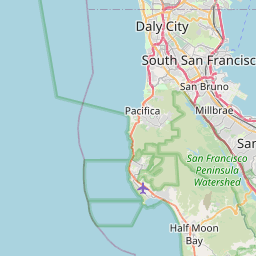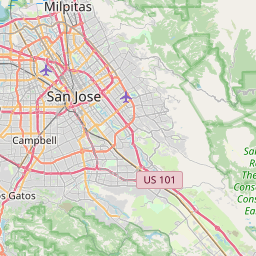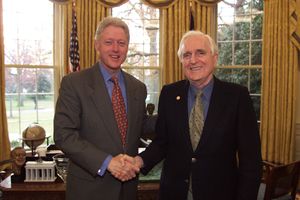Milestones:Public Demonstration of Online Systems and Personal Computing, 1968
- Date Dedicated
- 2017/03/19
- Dedication #
- 175
- Location
- Menlo Park, CA
- IEEE Regions
- 6
- IEEE sections
- Santa Clara Valley
- Achievement date range
- 1968
Title
Public Demonstration of Online Systems and Personal Computing, 1968
Citation
Commonly termed the "Mother of All Demos," Douglas Engelbart and his team demonstrated their oNLine System (NLS) at Brooks Hall in San Francisco on 9 December 1968. Connected via microwave link to the host computer and other remote users at SRI in Menlo Park, the demonstration showcased many fundamental technologies that would become ubiquitous, including collaborative online editing, hypertext, video conferencing, word processing, spell checking, revision control, and the mouse.
Please note: the wording "at Brooks Hall in San Francisco" should actually read "at the San Francisco Civic Auditorium"
Street address(es) and GPS coordinates of the Milestone Plaque Sites
- Site 1: SRI International Building A, 333 Ravenswood Ave., Menlo Park, CA 94025, 37.45758, -122.17642
- Site 2: Computer History Museum, 1401 N. Shoreline Blvd, Mountain View, CA 94043, 37.414757, -122.077679
Details of the physical location of the plaque
- Site 1: In the SRI Building A Visitors Lobby, the 3rd of 3 Milestone plaques mounted on the left wall
- Site 2: On the inside face of the front patio brick wall, near the museum's Main Entrance
How the plaque site is protected/secured
- Site 1: Open to the public 7am-6pm on weekdays
- Site 2: Building security; 24/7 access.
Historical significance of the work
Helping catalyze a fundamental switch in the way computers are used, i.e. as communication and knowledge navigation devices rather than primarily for calculation. A variety of technologies were shown in this demo that made their way into later computing systems - video conferencing, hypertext, collaborative editing, mice, GUIs, etc. Many of these would go on to influence the Xerox PARC Alto and later the Macintosh and Windows operating systems.
The phrase "Mother of All Demos" has entered the vernacular in reference to this event, and especially when used in the computing community, is recognized as referring to this event. "Demo" in this case being short for "demonstration" (as opposed to "demolition," which it can mean in civil engineering or architectural contexts).
Obstacles (technical, political, geographic) that needed to be overcome
The practical obstacles were getting funding for such radical ideas, assembling the world-class hardware and software engineers needed to make them a reality, and developing the actual software and hardware given that most of the main elements needed to be invented or at developed from scratch. The main obstacle, however, was one of attitude: the mainstream computer science community and industry of the era did not see communication and knowledge navigation as a practical or cost-effective application for computers
Features that set this work apart from similar achievements
It's difficult to think of any comparable achievements; this short demo gave a (working) glimpse of the major end-user computing technologies of the next twenty-five-plus years.
Significant references
The demo itself, on youtube: https://www.youtube.com/watch?v=yJDv-zdhzMY
Augmenting Human Intellect: A Conceptual Framework (D. Engelbart, 1962, a predecessor to the Demo): http://www.dougengelbart.org/pubs/augment-3906.html
The paper for the demo ("A Research Center for Augmenting Human Intellect "): http://www.dougengelbart.org/pubs/augment-3954.html
John Markoff, What the Dormouse Said, 2005 (book), excerpt: http://www.webcitation.org/6LfhwHDLN
Obituary by John Markoff: http://www.nytimes.com/2013/07/04/technology/douglas-c-engelbart-inventor-of-the-computer-mouse-dies-at-88.html?pagewanted=all&_r=1
Memorial article at the Computer History Museum: http://www.computerhistory.org/atchm/chm-fellow-douglas-c-engelbart/
Fellow Award page at Computer History Museum: http://www.computerhistory.org/fellowawards/hall/bios/Douglas,Engelbart/
Permanent exhibition at Computer History Museum: http://www.computerhistory.org/revolution/the-web/20/373
Guide to the ARC/NIC records: http://www.computerhistory.org/collections/catalog/102706170
Video of memorial event: http://www.computerhistory.org/collections/catalog/102746816
Stanford event 1999, "Engelbart's Unfinished Revolution." Video of event at archive.org, URL for 1 of over 20 segments: https://archive.org/details/XD1901_1EngelbartsUnfinishedRev30AnnSess1
http://web.stanford.edu/dept/SUL/library/unrev/introduction/introduction.html. Video at Stanford event celebrating Engelbart 2008: https://archive.org/details/StanfordNews2008TributeEngelbart
Oral history interview of Engelbart by John Markoff: http://www.computerhistory.org/collections/catalog/102654066
The Douglas Engelbart Institute page on the demo: http://www.dougengelbart.org/firsts/dougs-1968-demo.html
Wired article: http://archive.wired.com/science/discoveries/news/2008/12/dayintech_1209
Invisible Revolution, Web documentary on Douglas Engelbart: http://www.invisiblerevolution.net/
Conference Announcement Flyer (attached)
"The Mother of All Demos", Salamanca, Claudia, Proceedings of the Digital Arts and Culture Conference, 2009, deconstructing the presentation and its impact
Supporting materials
See above references
Dedication Ceremony
Map




















